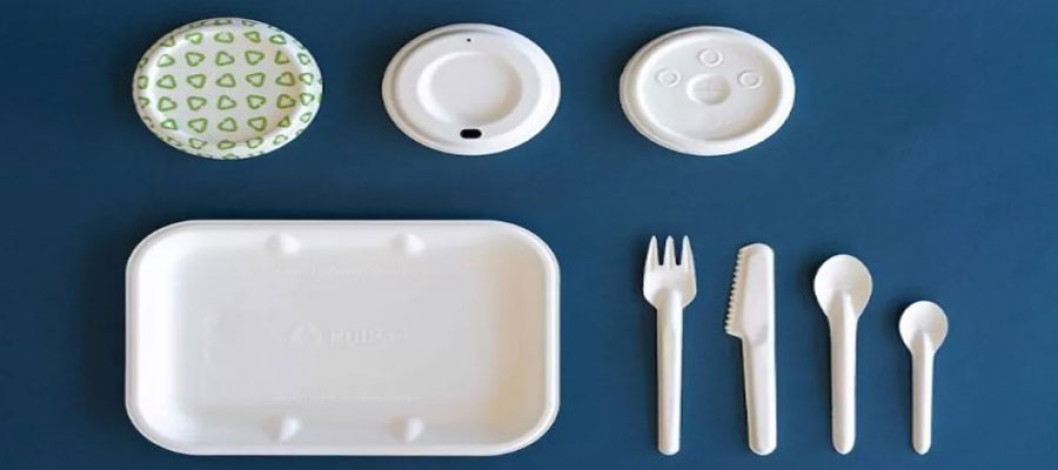
File Photo
At the beginning of 2025, for example, INDEX™26 exhibitor Andritz announced the opening of its new technical center in Montbonnot, France, which is dedicated to advancing the production of dry molded fiber (DMF).
DMF is an interesting material that is being enabled by combining the Dan-Web airlaid nonwovens forming capabilities of Andritz with the special molding technology of its Swedish partner, PulPac, to create a range of three-dimensional cellulose-based products, primarily replacing hard plastics or foam, and particularly in food and beverage packaging.
Applications for DMF so far include sustainable coffee lids, trays, bowls, and cutlery, as well as takeaway containers, all based on wood pulp. DMF can also be used to create packaging with high cushioning properties to provide protection during transportation.
“Our new pilot line is an important step in advancing solutions for responsible convenience packaging from wood pulp,” says Andreas Lukas, Senior Vice President at Andritz Nonwoven and Textile. “The new Andritz technical center will support the development of industrial-scale solutions for high-speed, turnkey DMF production plants for the packaging industry. It will also enable customers to conduct trials, receive support on R&D projects, and create new products with customized shapes and barrier properties.”
Sontara EcoRE
The award-winning Sontara EcoRE bags of Magnera – another INDEX™26 exhibitor – are an example of cellulose-based nonwovens that can not only replace single-use plastic alternatives, but also more durable woven shopping bags.
By combining carefully selected raw materials with the proprietary Sontara technology, Sontara EcoRE achieves exceptional high strength in all directions without the use of binders. This gives it the equivalent properties to a woven textile, making it suitable for high-performance and semi-durable applications like shopping bags.
“With plastic bag bans across many territories worldwide, Sontara’s EcoRE material offers a timely solution for the retail and shopping market as an alternative to traditional synthetic materials,” says Seth Good, Sontara product line management director. “This is only one example of how this strong and sustainable material might be used to solve customer challenges.”
Magnera’s global platform can support local customers and supply Sontara’s EcoRE both as a finished bag with options for personalization and as a versatile nonwoven material.
Automotive interiors
The success of nonwovens in materials substitution is perhaps most notable in the automotive industry, where foams, for example, like nonwovens, are employed primarily because of their low weight and low cost. Often this is in laminated combinations with nonwovens and surfacing fabrics for applications including seating, headliners, pillars, and acoustic and thermal insulation.
Foams, however, are restricted in the breathability they can provide, and there are also environmental issues related to their production.
For these reasons, engineered nonwovens, which are lightweight by nature but also provide enhanced air permeability as a result of their unique vertically oriented fiber structure, are now replacing the PU foam components in the seating of many vehicles.
In addition to flooring and insulation layers, natural fiber nonwovens are also now used extensively by major car makers as composite reinforcements in headliners, dash components, and door panels, replacing previously used hard plastics. See more.
Source: Online/NAN
Comment Now